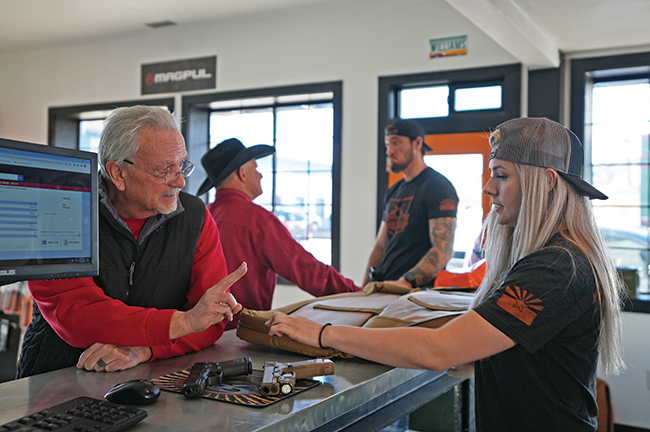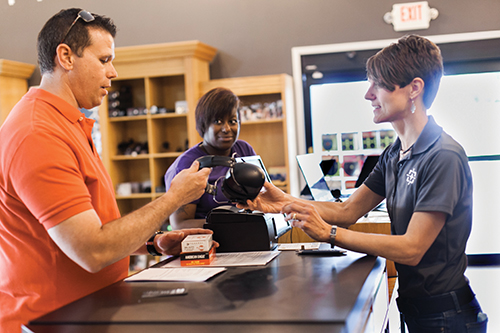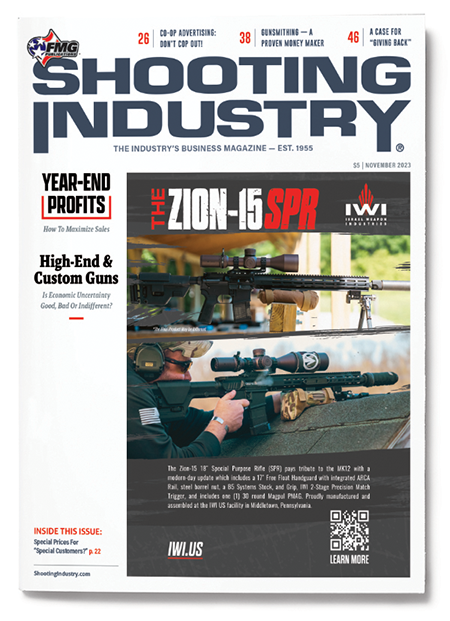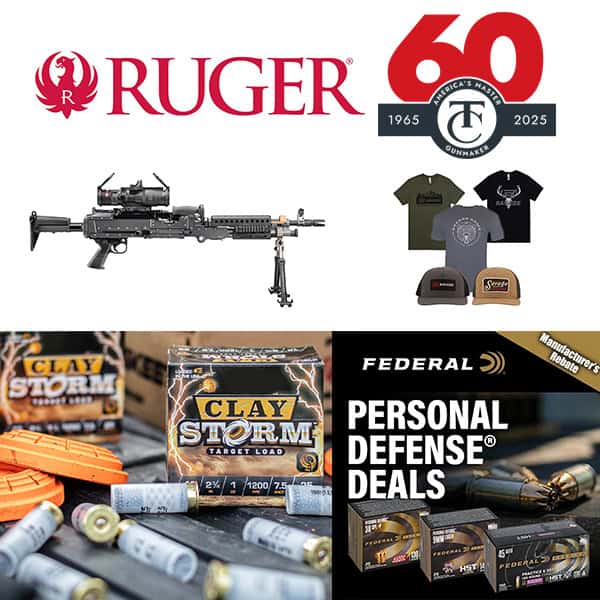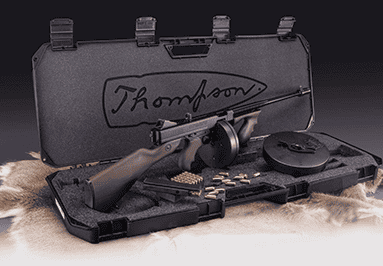5 Ways to Boost year-End Profits
How do you add more to the bottom line without spending a bunch of capital? Start with going back to the basics — greet every guest who comes in the door and try to get one of your products in their hands.
Getting your product in your guests’ hands is a key selling tactic. (Not to mention, free!) I worked a booth at a consumer show years ago. Across the aisle from my booth was someone selling literal pooper scoopers — definitely not a sexy item. Worse than trying to sell them at a trade show, the buyer had to carry the stupid thing with its long handle around the rest of the show.
During the show, the salesperson would hand the scooper to people as they walked down the aisle. Almost everyone he reached out to took one, stopped and listened to his sales pitch — which wasn’t great. (His “lead” was Steve Yzerman, the old Detroit Red Wings captain, and he had one of the scoopers, too. Granted, the show was in Michigan so maybe it wasn’t the worst lead.) I was amazed at how many he sold — it seemed everyone was walking around the show with one of his pooper scoopers. I’m not sure all who bought one even owned a dog.
The number-one way to add more dollars to your bottom line: Do not allow staff to ask, “May I help you?” when a guest enters your store. Read on to see what they should do.
1. Better Greetings
The best way to greet guests as they enter your store, in my opinion, is the method taught by Bob Phibbs, the Retail Doctor. He suggests your staff greet the guest at a 45-degree angle with some type of merchandise in their hand by saying, “Welcome to XYZ Shooting Center, I will be right with you.”
Having some type of merchandise in their hand gives the staff member a reason to let the customer look around while he or she steps aside to handle the merchandise they were holding during the greeting. It allows guests to go to a section of the store that interests them.
Your staff can then catch up with them and start asking questions. For example, if a guest is looking at earmuffs, staff can ask if they’ve tried the new gel-filled models from Pro Ears while opening the package and handing them a pair to examine or try on. As our friendly pooper-scooper salesperson has shown, getting your product in a customer’s hands produces results.
Clothing stores know this as well; one study showed the odds of a sale increased from 10% to 69% just by getting a customer to try on products. Instead of just buying the products with a click of the mouse, one reason shoppers are in your store is to touch and hold what they’re interested in — teach your sales staff to help them do just that.
2. Go The Extra Mile
What better way to show you’re there to help guests (and make a profit) than by going the extra mile and getting them product you don’t have in stock?
I know a lot of you pooh-pooh special orders as not worth the hassle, but think this through. You’re buying a product that’s presold so there’s no need to worry about turn rates — it’s even sold before you have to pay for it. Plus, you already received a deposit paying for at least part of the item before it’s ordered.
Another big bonus is it gets the guest to come back into your store a second time to pick up the item. Many chain stores don’t like to make special orders for guests, so turn this to your advantage. You probably have a lot of distributors you’re already dealing with on a daily basis anyway — use them to your advantage and turn special orders into a positive sales opportunity.
Get a large sign promoting special orders. Brothers Will and Evan Reynolds operate Leadfeather Guns & Ammo, a nearly 7,000 sq. ft. range and retail facility, and they use special orders to regularly land additional sales. (They have an impossible-to-miss-sign that reads “Don’t See What You’re Looking For? We Do Special Orders!” above the gun wall.)
3. Ask: Are We Missing Something?
Here’s a novel idea: Ask your guests what they want that you’re not currently providing.
The great baseball promoter Bill Veeck stood outside his ballpark after a game and asked fans what they liked about coming to his stadium and what they were missing. Fans told him they missed the instant replay of television. Since this was before the days of super HD jumbotrons in stadiums, he went outside the envelope and hired mimes to act out the previous play by standing on top of the dugouts. Fans loved it.
Is there something your store is missing that guests would share if you just asked the question?
One reason shoppers are in your store is to touch and hold what they’re interested in — teach your sales staff to help them do just that.
4. Offer “Buying” Carts …
Jay Wallace, patriarch of the Wallace family — owners of the self-proclaimed “Greatest Store on Earth,” Adventure Outdoors in Smyrna, Ga. — offered his advice on increasing sales during lean periods. (With over 16,000 guns in stock, who’s to argue it isn’t the greatest store on earth?)
Wallace lends, “First, what we’re going through is nothing new. I’ve seen it time and time again. Overly easy times bring undesirable slow times. It’s a wave we ride and then the tide recedes. My advice is to take advantage of opportunity — all the time. When it’s slow, get those things done you couldn’t do while it was busy. Let employees take pride in your store by making changes the customers will notice. Start at the entrance and work your way back.”
Another nugget from Jay: “Our strategy is to have something of size on sale at the front that requires a ‘buying cart’ — not a shopping cart. Your store may be too small for a ‘buying cart’ so make it a ‘buying basket.’ Get the customer started off right pushing a cart (or carrying a basket) in your store.”
Jay is on to something cheap and easy to implement. One of the large hardware store chains claimed a 20%+ sales increase when a guest uses a basket. Know why Costco has larger-than-average buying carts? They did studies and found the bigger the buying cart, the more people bought during their visit.
Think about your own shopping experience. Once your hands are full, don’t you usually cash out? Sure, at times you’ll make a pile — but why take the chance? Make it a priority: When your staff sees someone with an item in their hand, get them a basket. Get your buying baskets off the floor and put them in more locations in the store.
Firstly, no one will see them on the floor, and secondly, many shoppers aren’t planning on buying multiple items as they walk in. It’s only after looking around and being enticed by your great merchandise selection they buy more than planned, so have buying baskets in multiple locations in your store.
(Look for more money-making ideas from Jay Wallace in some of my future articles. When the legend gives advice, I take notes.)
5. Handle Refunds Differently
Here’s a free-to-implement idea: when you must give a guest a refund, instead of giving back cash or refunding the amount on their credit card, offer a gift card. Not only will this keep money in your hands longer, but you’ll also recoup some of the money in the form of margin when the customer buys an item or service with the gift card.
“Our strategy is to have something of size on sale at the front that requires a ‘buying cart’ — not a shopping cart. Your store may be too small for a ‘buying cart’ so make it a ‘buying basket.’”
Jay Wallace, Owner
Adventure Outdoors, Smyrna, Ga.
What It All Comes Down To
The last tip from almost all business coaches is to take action. I know after I went to an industry show, seminar or read an article, I would pick up a great nugget that could help my sales, go back to my store with great intentions to implement the idea and watch the cash register ring — only to get bogged down with day-to-day business and not get the nugget implemented.
We must execute. This old joke provides a good overview: Three birds were sitting on a fence. One decides to fly away. How many are left? Well, three — one decided to fly away, but didn’t do anything about it.
Decisions don’t make changes, executing does.

